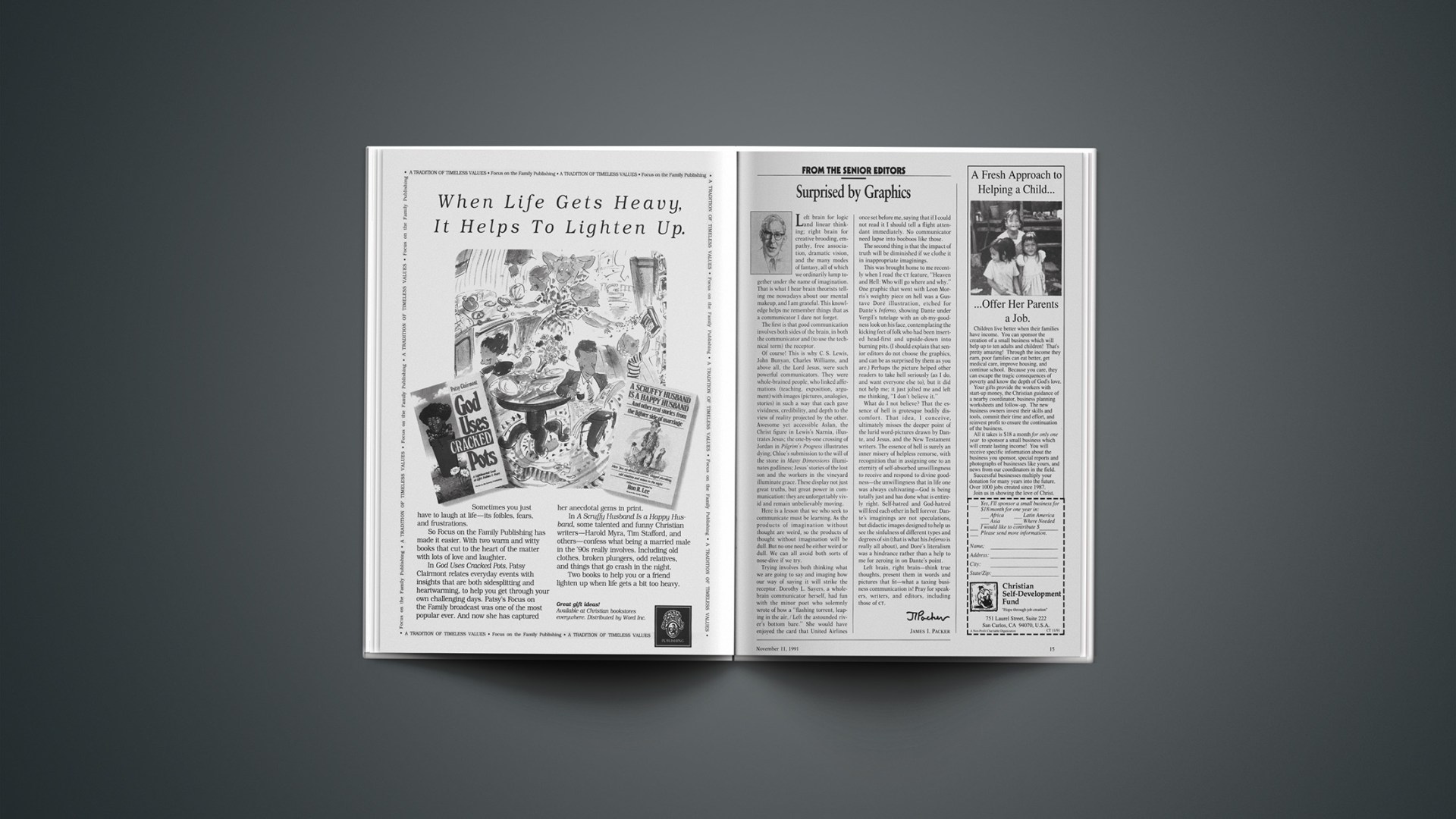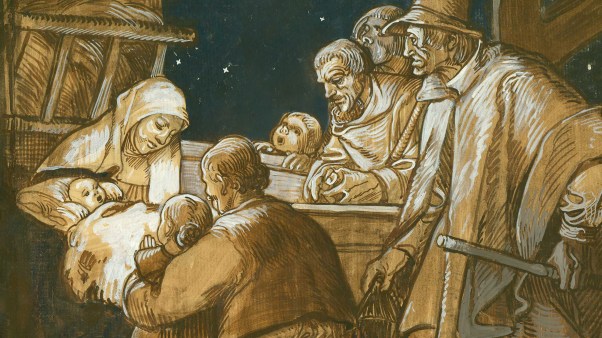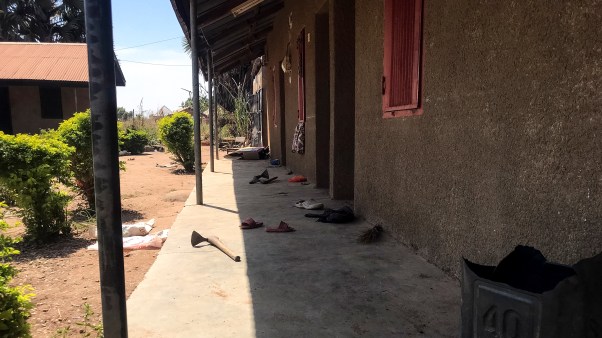Left brain for logic and linear thinking; right brain for creative brooding, empathy, free association, dramatic vision, and the many modes of fantasy, all of which we ordinarily lump together under the name of imagination. That is what I hear brain theorists telling me nowadays about our mental makeup, and I am grateful. This knowledge helps me remember things that as a communicator I dare not forget.
The first is that good communication involves both sides of the brain, in both the communicator and (to use the technical term) the receptor.
Of course! This is why C. S. Lewis, John Bunyan, Charles Williams, and above all, the Lord Jesus, were such powerful communicators. They were whole-brained people, who linked affirmations (teaching, exposition, argument) with images (pictures, analogies, stories) in such a way that each gave vividness, credibility, and depth to the view of reality projected by the other. Awesome yet accessible Aslan, the Christ figure in Lewis’s Narnia, illustrates Jesus; the one-by-one crossing of Jordan in Pilgrim’s Progress illustrates dying; Chloe’s submission to the will of the stone in Many Dimensions illuminates godliness; Jesus’ stories of the lost son and the workers in the vineyard illuminate grace. These display not just great truths, but great power in communication; they are unforgettably vivid and remain unbelievably moving.
Here is a lesson that we who seek to communicate must be learning. As the products of imagination without thought are weird, so the products of thought without imagination will be dull. But no one need be either weird or dull. We can all avoid both sorts of nose-dive if we try.
Trying involves both thinking what we are going to say and imaging how our way of saying it will strike the receptor. Dorothy L. Sayers, a whole-brain communicator herself, had fun with the minor poet who solemnly wrote of how a “flashing torrent, leaping in the air, / Left the astounded river’s bottom bare.” She would have enjoyed the card that United Airlines once set before me, saying that if I could not read it I should tell a flight attendant immediately. No communicator need lapse into booboos like those.
The second thing is that the impact of truth will be diminished if we clothe it in inappropriate imaginings.
This was brought home to me recently when I read the CT feature, “Heaven and Hell: Who will go where and why.” One graphic that went with Leon Morris’s weighty piece on hell was a Gustave Doré illustration, etched for Dante’s Inferno, showing Dante under Vergil’s tutelage with an oh-my-goodness look on his face, contemplating the kicking feet of folk who had been inserted head-first and upside-down into burning pits. (I should explain that senior editors do not choose the graphics, and can be as surprised by them as you are.) Perhaps the picture helped other readers to take hell seriously (as I do, and want everyone else to), but it did not help me; it just jolted me and left me thinking, “I don’t believe it.”
What do I not believe? That the essence of hell is grotesque bodily discomfort. That idea, I conceive, ultimately misses the deeper point of the lurid word-pictures drawn by Dante, and Jesus, and the New Testament writers. The essence of hell is surely an inner misery of helpless remorse, with recognition that in assigning one to an eternity of self-absorbed unwillingness to receive and respond to divine goodness—the unwillingness that in life one was always cultivating—God is being totally just and has done what is entirely right. Self-hatred and God-hatred will feed each other in hell forever. Dante’s imaginings are not speculations, but didactic images designed to help us see the sinfulness of different types and degrees of sin (that is what his Inferno is really all about), and Doré’s literalism was a hindrance rather than a help to me for zeroing in on Dante’s point.
Left brain, right brain—think true thoughts, present them in words and pictures that fit—what a taxing business communication is! Pray for speakers, writers, and editors, including those of CT.










